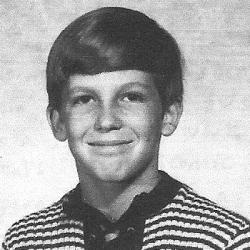I was five when it happened. Eleven when I learned about it.
My parents both worked full time, so I was always in the hands of a caretaker. What happened to Sylvia Likens touched some powerful fears — of being scapegoated, tormented by other children, abandoned by loved ones. Everyone knows these terrors.
The case was retried in 1971, the same year I started reading the afternoon newspaper (which had better comics and friendlier typefaces than the morning newspaper). The courtroom testimony was shocking and lurid, perhaps doubly so for an 11-year-old, and I could sense my parents’ growing discomfort as I hoovered up every crumb. I remember asking my mother why they would carve Sylvia’s religion into her stomach — I hadn’t yet learned the difference between Protestant and prostitute. I was also impressed, if not slightly annoyed, that everyone knew how to pronounce Gertrude Baniszewski’s four-syllable Slavic surname, yet nobody could pronounce my own.
The mind nearly bends when imagining what today’s outrage machine and media landscape would’ve done with this particular story and with these particular characters — the entire case was so far ahead of its time. Besides John Dean’s reporting and the trial transcript, however, the archival record is thin. There are few available photos of the crime scene or trial, no interviews with many of the perpetrators. No book deals for Sylvia’s survivors, nor for the trial judge, the cadre of lawyers, or the neighbors who ignored her screams at the corner of East New York and Denny. We’re left mainly with the interpretations of those who, during the past five decades, couldn’t forget or put this story aside: Kate Millett’s soul-searching meditation The Basement, the powerhouse cast in Tommy O’Haver’s An American Crime, novels, plays, websites, online forums, and even tribute songs on YouTube.
I reckon Indianapolis, straddling the urban Midwest and rural Appalachia, was eager to leave this case far behind after the trial was over and the guilty were locked away. But it stubbornly lived on through tattered copies of The Indiana Torture Slaying, card indexes at the Indianapolis Star & News library, microfilm viewers at the Central Library on East St. Clair Street, and most certainly through word of mouth. This story demands to be told.
Word of mouth is the Internet today, and the story now belongs to millions around the world, not just to a generation of aging Hoosier boomers. Many of the newcomers are young. They gasp and they mourn and they rage online — the same anguish that was chronicled 50 years ago in the Star’s letters-to-the-editor section: “I have cried all day at just thinking of the girl’s complete helplessness. …” If wider dissemination of the story brings any benefit, it comes from finding that we’re not as jaded as we think.
This case is a test of how one deals with it. Most people purge it from their mind as soon as the horror and disgust subside. But for many others, it lingers like a tiny sliver of wood just beneath the skin. In 2008, after years of research and fits of creative paralysis, I settled on producing a trilogy of video interviews with people whose lives have been affected, maybe even redirected, by what happened on the near-Eastside in the fall of 1965. The first video is an interview with John Dean, who covered the trial for the Indianapolis Star and wrote the cult-classic paperback The Indiana Torture Slaying. (He later became a lawyer and changed his name to Natty Bumppo.) Check back here in December for an interview with a local woman who fought hard to stop Gertrude Baniszewski’s parole in 1985.
Forty-four years after first reading her name, I’ve come to believe that there really is no end to this story. Sylvia Likens, no matter how hard one tries, will never be forgotten.
Editor’s Note: Check out The Indianapolis Star for more local coverage of Sylvia Likens.
The opinions expressed in the video do not necessarily reflect the opinions of Limestone Post or its staff.

